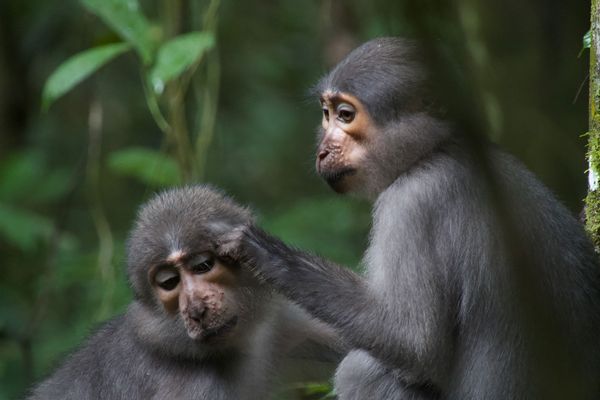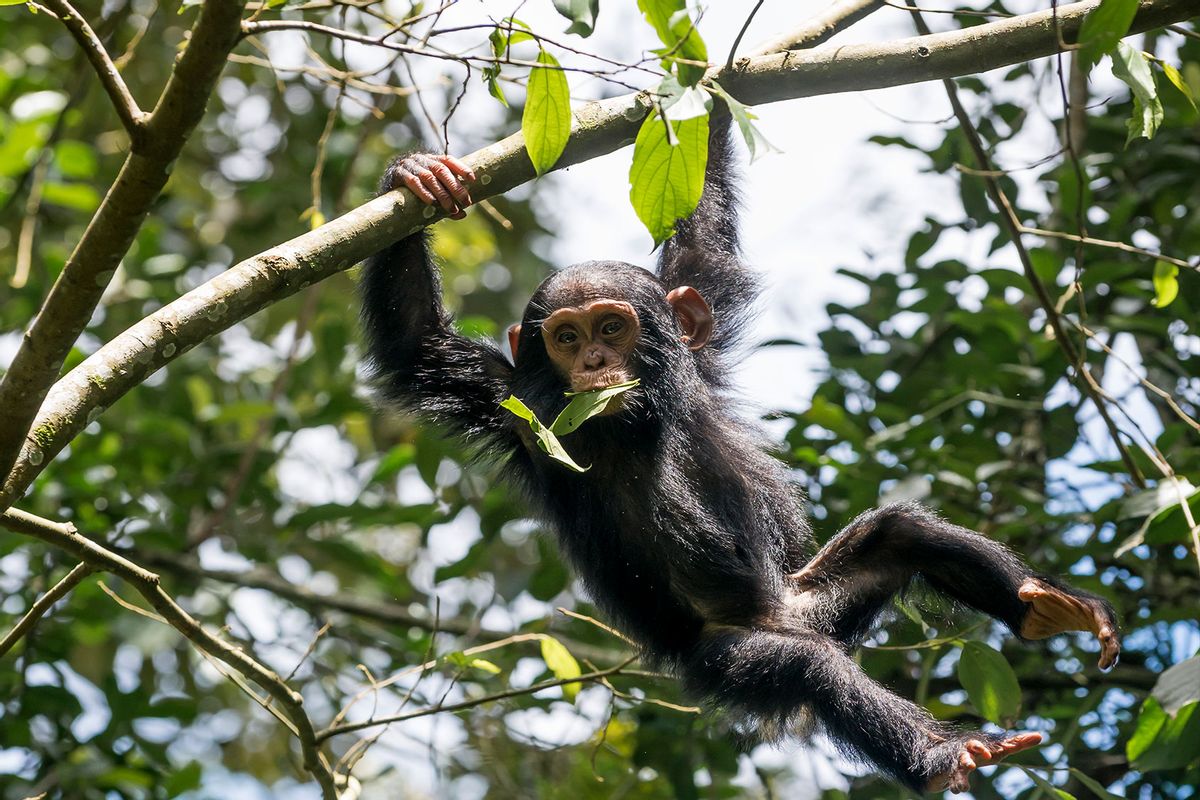Mary Joy is an undergraduate student at Dartmouth University's Department of Anthropology — and, additionally, is a climber and runner. Indeed, Joy's athletic interests have fueled her scientific endeavors in at least one important way: They helped her develop a hypothesis about the evolution of shoulders, elbows and wrists in human beings. Since humans apparently use quick movements with a large range of motion when running downhill, could that same increased range of motion exist in primate shoulders and elbows to reduce fatigue and muscle contraction when they climb downward?
Why do apes have a far greater range of motion in their shoulder, elbow and wrist joints than monkeys?
Now Joy is the co-author of a scientific paper, recently published in the peer-reviewed journal Royal Society Open Science, that offers real evidence behind that hypothesis (which later became her thesis). To provide this evidence, the Dartmouth researchers studied the "upclimbing" and "downclimbing" movements of both wild chimpanzees (Pan troglodytes) and sooty mangabeys (Cercocebus atys, a small monkey species), using sports-analysis and statistical software.
While comparing the videos and photographs, they noticed that chimpanzees did not downclimb in the same way as mangabeys: while the mangabeys scaled trees with their shoulders and elbows mostly bent close to their bodies, chimpanzees support their weight by extending their arms far over their heads.
Thanks to this discovery, scientists can now start answering one of the great mysteries of primate evolution: Why do apes have a far greater range of motion in their shoulder, elbow and wrist joints than monkeys?
"Researchers have long puzzled over the question, with most arguments focusing on (a) climbing upward or (b) below-branch suspension," Dr. Nathaniel J. Dominy, study co-author and a professor of anthropology at Dartmouth University told Salon by email. The new study focuses on the importance of downclimbing, as "controlled descent is more challenging than ascent even though gravity is identical in both directions, so it follows that monkeys and apes should use their shoulders and elbows differently during downclimbing, and they do!"
 Mangabey close up (Photo by Luke Fannin)
Mangabey close up (Photo by Luke Fannin)
This particularly applies to chimpanzees, who are heavier than monkeys and therefore utilize their shoulder and elbow joints more expansively than monkeys "to maximize use of their feet as brakes, a position known as 'laybacking' among human rock climbers," Dominy said. The study is the first to show these differences in body movement, or kinematics, during vertical climbing.
"But if you ask any rock climber," Dominy said, "they'll tell you that climbing downward is more difficult than climbing upward, even with all the advantages of our super-flexible ape shoulders and elbows."
Joy elaborated on the importance of further studying downclimbing, as this seemingly simple act contains movements that could help unlock some of the secrets of human evolution.
"From my perspective, it indicates that downclimbing is a potential evolutionary force that has implications for primate — and eventually human — skeletal morphology, as opposed to just a leftover motion," Joy told Salon by email. "In other words, it's a powerful form of movement in its own right, and should be studied further."
Want more health and science stories in your inbox? Subscribe to Salon's weekly newsletter Lab Notes.
"Downclimbing is a potential evolutionary force that has implications for primate — and eventually human — skeletal morphology."
To explain why she feels this way, Joy observed that our bodies likely evolved to adapt to changes in our environments and modes of living. When viewed from that vantage point, it makes sense that creatures which constantly need to transport their bulky bodies through trees would benefit from anatomical features that act as brakes. It just so happens that these same features make it possible to play organized sports, craft sophisticated tools and do hosts of other activities specifically associated with humans.
"To me, it made me think a lot about how other forms of human movement might have stemmed as safety (or other) adaptations to movement that our common ancestors might have had to do as they shifted between modes and environments of living," Joy explained. "Based on our study, it seems plausible that our common ancestors developed this large range of motion in their upper arms in response to the need for safer downclimbing, but even in the absence of that pressure, we use that same adaptation to stretch, throw balls (or weapons) and rock climb recreationally."
It is easy to conceptualize how human downclimbing led to these evolutionary quirks. As Dominy put it, these careful climbing behaviors "would have favored the stiff spine and thicker lumbar vertebra needed for upright walking, together with shoulders and elbows equipped for throwing objects and making tools." The end result was that "climbing gave us the anatomical needed to thrive as hominins in the savanna-woodlands of Africa."
We need your help to stay independent
It also provided the Dartmouth students behind this project with experiences they will never forget. Dominy himself commented that "this study was led by two students, and I'll never tire of seeing the thrill of discovery when students see the first results of their hard work." In this case that hard work "improves our understanding of how primate bodies evolved to solve essential problems safely and efficiently. Our own bodies are a legacy of that process."
It also had the incidental effect of allowing the students to develop bonds with the monkeys they observed. As Joy recalled, "I actually really enjoyed observing and measuring the mangabeys' climbing behavior in the videos. They're adorable animals, and despite the fact that they were different individuals, I named them all Geronimo."



Shares